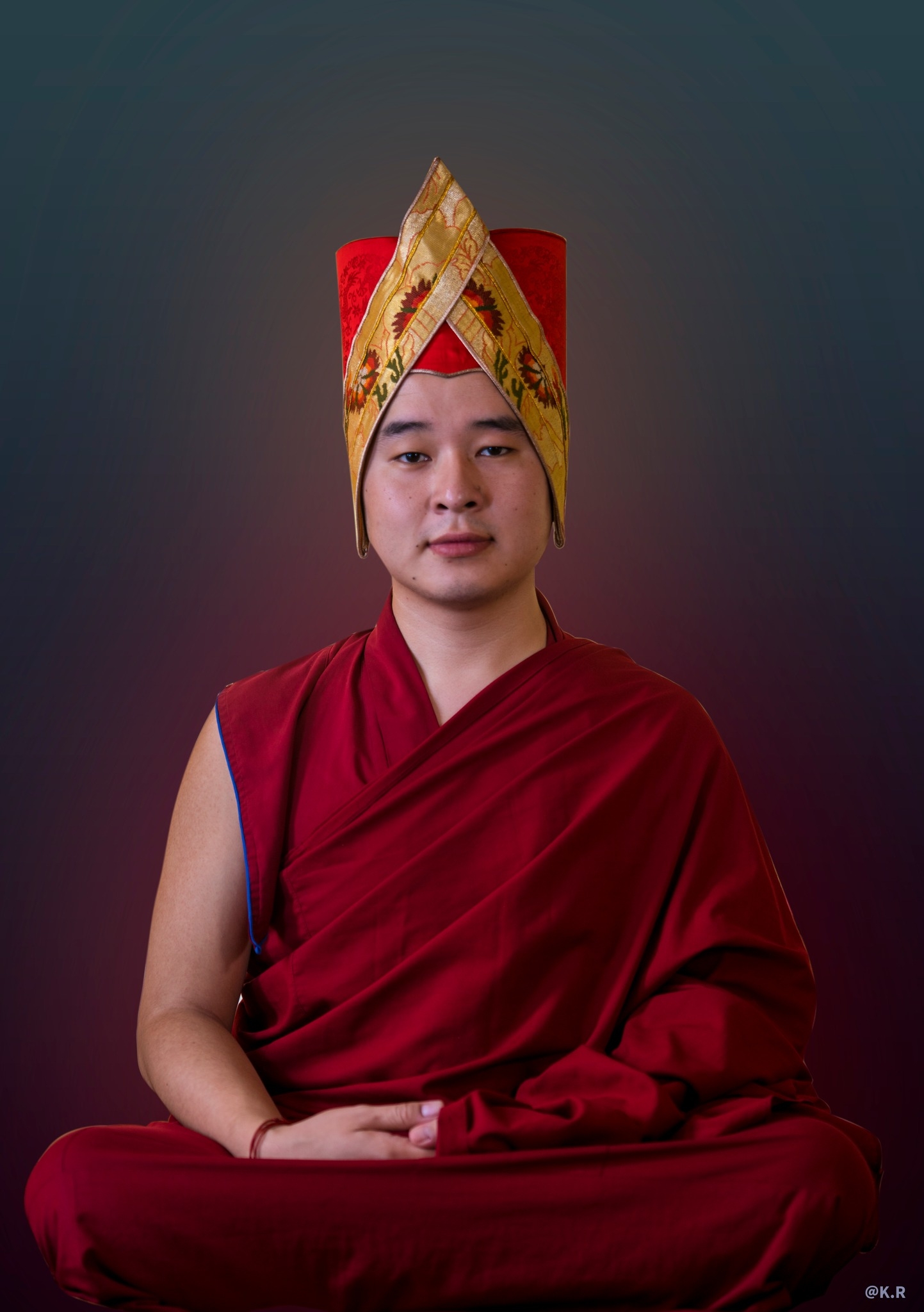
His Eminence Ngor Khangsar Shabdrung Rinpoche
Dharma program in Prague
The Green Tara Empowerment
Friday, October 18, 2024, 18.00 - 20.00 (21.00)
The Seven-Point Mind Training - public talk
Saturday, October 19, and Sunday, October 20, 2024
On both days 10 a.m. - 11.30 a.m., 2 p.m. - 3.15 p.m. and 3.45 p.m. - 5 p.m.
Venue: Tibet Open House, Školská 28, Praha, Czechia
Recordings: here.
Language: Tibetan with Czech interpretation
Contact: info@siddhartha.cz, +420 777 178 129
His Eminence Ngor Khangsar Shabdrung Rinpoche
Khangsar Shabdrung Rinpoche (b. 1990) is the head lama of the Khangsar labrang, one of the four monastic seats of Ngor Ewam Choden, a Sakyapa monastery founded by Ngorchen Kunga Zangpo. Recognized by His Holiness the Sakya Trichen, Rinpoche is the reincarnation of Khangsar Ngawang Khyentse Thupten Nyingpo (1913–1988), a past abbot of Ngor. Since his youth, Rinpoche has received extensive training and teachings in the sutras and tantras from His Holiness the Sakya Trichen, His Eminence the late Luding Khenchen Rinpoche, and other great masters. He primarily teaches and resides in Manduwala, and oversees communities of monks and nuns in northern India.
The Seven-Point Mind Training
The Seven-Point Mind Training, in Tibetan བློ་སྦྱོངས་དོན་བདུན་མ་, ložong dön dünma, is one of the most famous Tibetan Buddhist texts on mind training, containing concise and practical instructions for developing bodhichitta. These instructions were brought to Tibet by Jowo Je Atisha and later compiled by Geshe Chekhawa.
This teaching provides concrete methods to transform everyday challenges and adversities into opportunities for spiritual growth and awakening. The teaching is designed to be applicable in daily life. It offers systematic techniques to recognize and gradually transform negative mental patterns, emotions, and attitudes into positive qualities like compassion, equanimity, and wisdom. The practices specifically target ego-clinging and self-cherishing attitudes, which in Buddhism are considered to be the root causes of suffering. While cultivating compassion, it also stresses the importance of understanding emptiness and the nature of mind.
An English translation of this text can be found here.
The Green Tara Empowerment
Tara (Skt. Tārā; Tib. སྒྲོལ་མ་, Drolma), 'She who Liberates' is a female bodhisattva associated with compassion and enlightened activity. There are different forms of Tara, such as the Eight Taras who Protect from Fear and the Twenty-One Taras, but the most popular are Green Tara, who is associated mainly with protection, and White Tara, who is associated with longevity.
In Tibetan Buddhism, the term empowerment is used for a ritual initiation ceremony that authorizes practitioners to perform specific tantric practices. It is the formal transmission of spiritual teachings and practices from master to disciple.
Here are some of the benefits of receiving the Green Tara empowerment:
1. It helps cultivate deeper compassion for all sentient beings.
2. It helps develop wisdom, understanding the true nature of reality.
3. It helps purify negative karma and obscurations.
4. It connects the practitioner to the lineage of teachers who have practiced and transmitted these teachings.
5. Practitioners receive blessings from Green Tara and the lineage of teachers.
6. Green Tara is associated with fearlessness, so empowerment and practice help overcome various fears and anxieties. Tara protects against various dangers and obstacles, both physical and spiritual.
7. In Vajrayana Buddhism, empowerment is often considered necessary before engaging in certain practices related to the yidam.
The full benefits of empowerment typically manifest when combined with ongoing study, practice, and guidance from a qualified teacher.
Vows and Commitments
As an integral part of the empowerment, both refuge vows and bodhisattva vows are bestowed. Tantric commitments accompany the practice of Tantra.
For this reason, The Green Tara Empowerment is exclusively for Buddhists or those who wish to become Buddhists.

Courtesy of Himalayan Art Resources
Refuge Vows
Taking refuge is the foundation of all Buddhist practices and the gateway to all vows. It involves taking refuge in the Three Jewels—Buddha, Dharma, and Sangha. The motivation to take refuge arises from the fear of suffering in samsara, compassion for others, and confidence in the Three Jewels. By taking refuge, we formally become Buddhists, committing to regard the Buddha as our teacher, the Dharma as our path, and the Sangha as our companions. After taking refuge, we must refrain from harming any being.
Bodhisattva Vows
The Bodhisattva vows commit one to the path of a bodhisattva, aspiring to attain Buddhahood for the benefit of all beings. This vow involves a commitment to selflessness, prioritizing the well-being of others, and practicing accordingly. There are two kinds of bodhicitta:
- Relative Bodhicitta: The aspiration to attain Buddhahood for the benefit of all beings and the determination to train in the methods necessary to achieve this goal.
- Absolute Bodhicitta: The direct realization of the absolute nature of phenomena, or primordial wisdom.
Tantric Commitments
In addition to the Refuge and Bodhisattva vows, Tantric practice involves specific commitments. These include respecting all beings, avoiding harm, and actively striving to help others.
While there is no requirement for a daily sadhana practice after receiving this empowerment, participants may choose to voluntarily commit to a regular practice.

